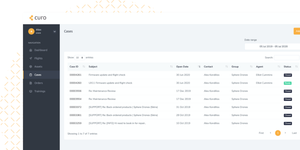CASA has published its RPAS (Remotely Piloted Aircraft Systems) and AAM (Advanced Air Mobility) Strategic Regulatory Roadmap which outlines its approach for RPAS and AAM regulations over the next 10 to 15 years.
This roadmap will ensure the related technologies will be safely integrated into Australia’s airspace and future regulatory system, alongside traditional aviation.
We are committed to advancing these pioneering technologies and see this roadmap as a priority as we frame the future of Australian aviation. - CASA
Challenges and principles
In the creation of the roadmap, five challenges of the RPAS and AMM sectors were identified as follows:
-
Diversity – the sector spans aircraft of unique types, sizes, and with varying degrees of complexity.
-
Pace of innovation – these sectors are rapidly evolving, and there is a high pace of innovation across technology and concepts of operation.
-
Scale – the number of RPAS operating in Australia is greater than the number of existing airspace users combined. The size of the AAM sector is expected to follow a similar trend to RPAS.
-
Disruptive – these technologies differ from traditional approaches to aviation. The aviation ecosystem will need to adapt to accommodate these technologies and ensure their safe integration.
-
Autonomy – automation and human machine interactions are expected to be important in supporting sector growth, however these technologies also pose great regulatory challenges that need to be monitored and addressed.
To address these challenges, the roadmap is guided by the following principles.
-
Safety first – safety must be placed first. The roadmap has been designed to deliver acceptable levels of safety performance for all aviation operations.
-
Risk and outcome-based – greater flexibility is achieved through a legislative structure that is outcome-based. Regulations should not prescribe solutions. Regulation and oversight should also be proportionate to the safety hazards and associated risks being managed.
-
Adaptive and scalable – the legislative structure needs to be able to be responsive to changing risk profiles and the dynamic needs of evolving sectors. It should also account for the size of the sector and pragmatic constraints, such as available regulatory resources.
-
Progressive and internationally aligned – the regulatory framework will be phased in its development and implementation, while remaining consistent with a longer-term vision. It should seek to align with, adopt or adapt international standards and regulations where beneficial in the Australian context. It should also consider appropriate alignment with Australia’s defence aviation safety regulations.
-
Balanced and socially responsible – the framework should achieve the required safety outcomes with consideration for the cost burden imposed on industry, while also accounting for broader community interests and expectations.
Developing the roadmap
Throughout the creation of the roadmap there was nine primary use cases for RPAS and AMM and six regulatory areas identified. While in discussion the technical working group identified two key themes. Demystification of current regulations and Regulatory change.
The use cases mentioned above are:
- Aerial application
- Entertainment
- Carrying cargo and packages
- Inspections and imaging
- Passenger-carrying in urban and regional environments
- Sport, recreation, and education
- Surveying and monitoring
- Training
- Research and development
Roadmap timing
The roadmap breaks the next fifteen years into four time horizons:
- Immediate term (2022 to 2023)
- Near term (2023 to 2026)
- Medium term (2026 to 2031)
- Long term (2031 to 2036)
In each of the categories the activities mentioned are further broken down into six regulatory areas. These are aircraft and aircraft systems, airspace and traffic management, operations, infrastructure, people, and safety and security.
To ensure you get the full picture be sure to have a read of the roadmap yourself on CASA's website to see the work our CEO, Paris Cockinos put in along with many other great leaders in the drone industry.



















